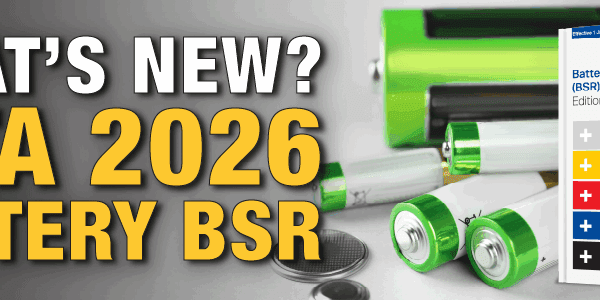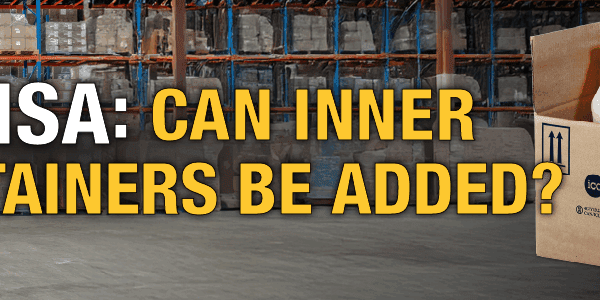Welcome back to the Regulatory Helpdesk where we answer your dangerous goods & hazmat questions. We’re here to help you become independent with – and understand the whys and hows of – the regulations.
Placarding Bulk Truckloads
- Q. My truck has 4000kgs of drums of Class 3 UN1993 in it. Truck has Class 3 UN1993 placard on it . We pick up 1 empty tote (IBC) which is Class 3 UN1993 also. Can we keep the same placard on the truck or do we need to add Class 3 only? Same with empty drums. We just need to add primary CLASS card? All transported via ground within Canada.
- A.Well the drums don’t need UN numbered placards since drums are considered small means of containment. A plain class 3 placard will do to represent the drums. It used to be in the Regulations that over 4000kg from one shipper could display UN numbered placard but it was repealed recently. Totes, even empty with residue, requires UN numbered placards for liquids in direct contact with the means of containment. You don’t need to add plain class 3 placard for the drums as both the drum and tote content is hazard class 3. So technically the truck displayed the correct placard (UN1993). If the drums were empty and less than 500kg gross mass then no placard will be required; however, if you are transporting empty drums and tote(s) with residue, the UN1993 placard must be displayed.
Shipping Methanol
- Q. My supplier sent me an SDS for Methanol. It lists in Section 14 that this is UN 1230 a Class 3 and a 6.1 according to IMDG, ADR, and IATA. I only ship here in the US. By DOT book tells me Methanol is only a class 3. What am I supposed to use to ship this as?
- A. Methanol is an odd material when transported. The regulations listed on your SDS from your supplier are either international or European ones. Under those rules, Methanol is a class 3 and a 6.1. If you truly only ship domestically within the US, then you must follow DOT or more accurately the 49 CFR. In that regulation, when transported domestically, Methanol only carries the Class 3 classification.
Category A Infectious Substances
- Q.Where in PI 620 in IATA does it say Category A infectious substances packaging should have “Class 6.2” and not an “S” printed on the box.
- A. PI 620 refers us to 6.5.3.1 in IATA, which outlines the various markings that are required on the boxes for Category A Packaging. This would include marking the box with a “6.2” rather than an “S” like in standard combination packaging.
California Prop 65
- Q. Under the new Prop 65 mandate of Aug 30, do I have to include all of the names of the materials causing the warning?
- A. No. As long as you list at least one chemical causing each “warning” then you have satisfied the requirements.
Placarding for UN1492 or UN1444
- Q.My shipment weighs 1,300 pounds. It is made up of small containers of either UN1492 or UN1444. What placards do I need on my truck in the US?
- A. Both of those UN numbers are class 5.1 oxidizers. That hazard class is on table 2 of 49 CFR Part 172.504. The threshold for placarding a load of Table 2 materials is 1001 pounds. Since you are over that amount you must placard the load. Since it is a mix of 2 UN numbers, you are not required to have the UN number of either material on the placard on the outside of the vehicle.
Technical Names on an SDS
- Q. Does my technical name in Section 14 of my SDS have to match the ingredients in Section 3 of the SDS? My UN number is 2735 which requires a technical name. My SDS author told me the technical name should be “2-Propenenitrile, reaction products with ethylenediamine, hydrogenated, reaction products with benzaldehyde, diethylenetriamine and triethylenetetramine, hydrogenated” because that is what is in Section 3 of the SDS.
- A. Transport and OSHA are 2 separate regulations. While there should be consistency within the SDS, OSHA cannot dictate the “data” in Section 14. Only that Section 14 must be on an SDS. For transport under 49CFR, a technical name can be a generic description as long as it readily identifies the general chemical group. For example, “petroleum aliphatic hydrocarbons” or “organic phosphate compounds” are both acceptable. You could for this particular name use “reaction products of 2-Propeneitrile”. Out of curiosity, I did some further digging. This particular name has multiple synonyms that are much shorter such as Thiazone and Dazomet. You could even use the chemical name itself which is actually shorter – 2-thio-3,5-dimethyl-tetrahydro-1,3,5-thiadiazine.





